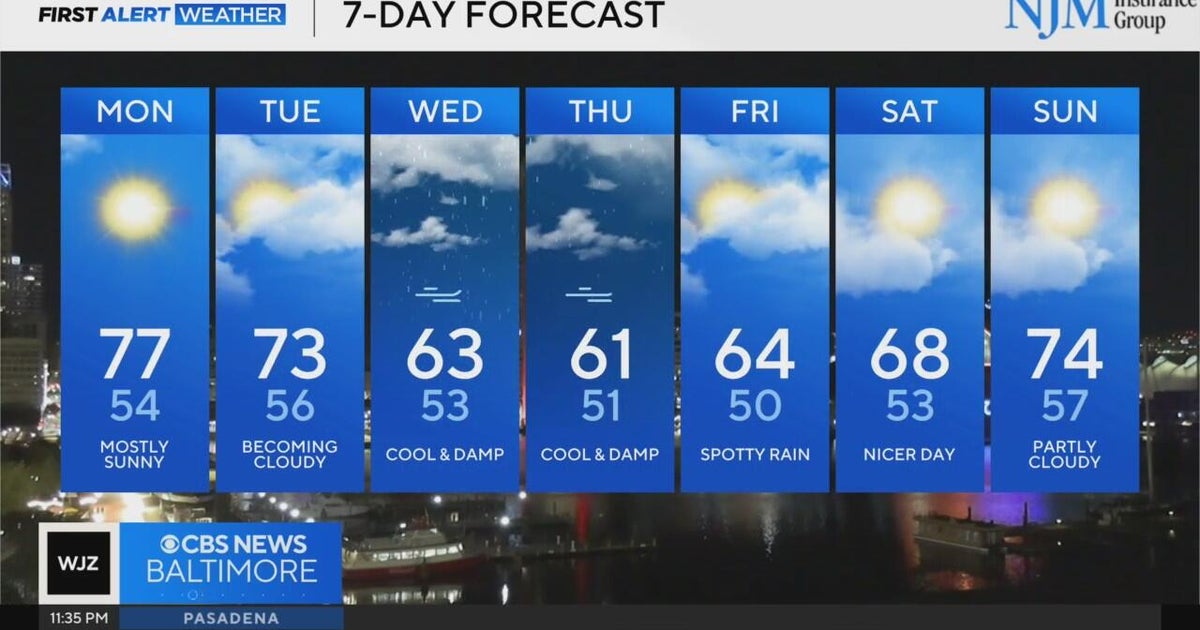Maryland
Maryland sex curriculum conflict is a battle of vulnerabilities

This school year, Maryland’s Montgomery County Public Schools (MCPS), one of the largest school districts in the country, instituted a curriculum whose selection for pre-K, “Pride Puppy,” encourages 3-year-olds to search for images of the “‘intersex [flag],’ a ‘[drag] king,’ ‘leather,’ ‘underwear,’ and a celebrated sex worker.”
Resource guides for children’s books on transgender people instruct the teacher to tell students that people only “guess” gender based on body parts. What’s more, religious parents with opposing beliefs about gender are no longer permitted to opt their child out of the elementary curriculum.
Now, there is a pending lawsuit by Muslim and Christian parents against MCPS. And at a recent Board of Education meeting, Muslim families testified about their concerns, only to be told by one council member, Kristin Mink, that (the entirely brown or Black) Muslim families were on the “same side” as “white supremacists.” She has since understandably expressed regret for saying such a thing.
Evidently preposterous on its face, Mink’s statement also got to the core of the conflict: a clash of victimhood and a stark inability to value the religious vulnerabilities at the core of the dispute.
Mink went on to say, “[T]o allow Muslim families to opt their children out of those books … harm[s] the LGBTQIA+ community.” Meanwhile, Muslim students also shared stories of harm. For example, one student spoke of religious students “being bullied when they say this is against my religion.”
Each side feels deeply wronged, as if the other’s position inherently legitimizes harm to their children and to their community. Such competing victimhood is a common dynamic that functions across multiple chasms — between American Muslims and white conservative Christians and between gay rights activists and religious Americans who have traditional views about marriage and sexuality. In each scenario, the parties devolve into warring factions, incapable and unwilling to speak across vulnerabilities because of entrenched divides.
The MCPS context is, however, importantly different. The protesting Muslim families have consistently acknowledged the importance of inclusivity and fellowship with students and families potentially marginalized due to sexual identity. As MCPS middle school student Saad Baig testified June 6, “I’m not here to take away the right of anyone being recognized in the community.” Similarly, community member Hamza Ewing emphasized that: “Our stance, as stated clearly, is not to remove LGBTQ material from the MCPS curriculum. … We are not spreading hatred … and, in fact, we firmly stand against hate speech or the degradation of any human being.”
In contrast, there has been scant consideration of the deep relevance of religion — including religious beliefs about gender and sexuality — to the lives of Muslim, Christian and other religious families at MCPS. Religious parents seeking to opt their children out of the sex curriculum have been portrayed as “brainwashed” and “hateful.” One member of the Board of Education said religious families are seeking a “dehumanizing form of erasure.” The rhetoric consistently reflects a dismissive attitude, a sense that the harm to religious families is unimportant — or worse yet, not even real.
The myopia is startling. Multiple aspects of the curriculum are deeply impactful to religious families with traditional views of not just gender and sexuality but also on the appropriate role of parents (and schoolteachers) in their children’s lives. Three-year-olds are being taught vocabulary such as “cis-gender” and “pansexual.” The fourth grade curriculum instructs the teacher to explore their students’ romantic attractions, including same-sex attractions. With a book about two girls finding love on a playground, the teacher is to invite students to “acknowledg[e] how uncomfortable we might [be]… when we feel our heart beating ‘thumpity thump’ & how hard it can be [to] talk about our feelings with someone that we don’t just ‘like’ but we ‘like like.’”
Fifth graders are to read a book about a young girl who believes she’s transgender and is encouraged on this path by parents who don’t ask questions and instead embrace a “child-knows-best approach,” which is complemented by a “school-knows-best-approach.” The curriculum prioritizes the teachers’ role in these intimate aspects of young children’s lives and deprioritizes parents. In fact, if parents are not fully affirming of children’s self-diagnosis, this curriculum directly makes them the objects of opposition.
The tension inherent in religious dissent to this sexual curriculum is not a black-and-white issue. The approach to it as such makes it even more difficult to find workable solutions. And to even begin to understand the nuances, the other side must be seen as worthy of engagement.
It should never be acceptable to dismiss sincere religious concerns as akin to “white supremacism,” and to selectively focus on the harm to only one side of a dispute. Both sides stand to be harmed, and neither can nor should claim “harm” completely. To survive these ongoing political contests, we must have the capacity to listen to others’ stories on their terms, not on our own.
Asma T. Uddin is an attorney and author of “The Politics of Vulnerability: How to Heal Muslim-Christian Relations in a Post-Christian America.”
Copyright 2023 Nexstar Media Inc. All rights reserved. This material may not be published, broadcast, rewritten, or redistributed.

Maryland
Sunny and pleasant start to Maryland’s workweek

Watch CBS News
Be the first to know
Get browser notifications for breaking news, live events, and exclusive reporting.
Maryland
This Maryland “Waterfall” is Visible From a Major Roadway – The MoCo Show

Many have sent in their own photos and videos wondering why we haven’t shared any visuals of the “waterfall” at Burnt Mills Local Park in Silver Spring. While we have provided information in the past, today we’ll take a closer look at the Burnt Mills Dam– visible from a busy stretch of Colesville Rd.
Located along the winding course of the Northwest Branch of the Anacostia River, the Burnt Mills Dam stands as a silent witness to the region’s evolving relationship with water. More than a physical structure, the dam and its surroundings weave together a narrative of industrial progress, natural beauty, and recreational delight.
The name “Burnt Mills” originates from a grain mill that once stood at the site. This mill burned down before 1788, and despite being rebuilt, it eventually ceased operations in the early 1900s– yet its name endured.
In the early 20th century, recognizing the need for a reliable water supply for a growing population, the Washington Suburban Sanitary Commission (WSSC) selected the site for a state-of-the-art water filtration plant. In 1929, the Burnt Mills Dam was constructed with a distinctive hollow deck Amberson-style design, accompanied by the Robert B. Morse Filtration Plant, which provided clean drinking water for decades.
As newer, larger water treatment plants were built along the Patuxent and Potomac Rivers, the Burnt Mills facility was decommissioned in 1962. Although the machinery and pipes were removed, the dam and its two historic pump houses remained as quiet reminders of the past.
Between 1996 and 2000, the Maryland-National Capital Park and Planning Commission (M-NCPPC) acquired the dam and pump houses to safeguard their historical significance. Today, the Burnt Mills Dam is officially recognized as a historic site.
The surrounding area has transformed into the Burnt Mills East and West Special Parks, maintained by Montgomery Parks as tranquil green spaces away from the city’s hustle and bustle. The dam-created Burnt Mills Reservoir offers a scenic setting for a variety of outdoor activities. Visitors enjoy exploring the Northwest Branch Trail, part of the larger Rachel Carson Greenway, where walking, biking, and horseback riding are popular pastimes. Even President Theodore Roosevelt once marveled at the river’s captivating rocks and rushing water.
Fishermen are drawn to the reservoir as well, where the gentle cascade over the dam provides a peaceful backdrop while they try to catch sunfish, bass, and bluegill. The Burnt Mills Dam illustrates how a site can evolve over time– from a place for a mill to a crucial component of public health infrastructure, and now to a cherished destination for nature enthusiasts and history buffs in Silver Spring.
Information courtesy of neighborsnwb.org, www.servpro.org, mncppcapps.org, Montgomeryparks.org
Maryland
Late offensive surge propels Maryland baseball to 13-11 victory over Rutgers

As has been the case for Maryland baseball many times this season, the Terps spent their final game of the season facing a late deficit — multiple times.
And yet, unlike many games through the long spring season for Maryland, the Terps came back. Multiple times.
In a game filled with momentum swings, Maryland put up a dramatic late rally to defeat Rutgers, 13-11, Saturday afternoon at Bob “Turtle” Smith Stadium.
After Rutgers failed to convert with a runner in scoring position in the first inning, Maryland used the bottom half of the frame to get its offense going once again. Chris Hacopian launched a solo homer to right-center field, giving the Terps a 1-0 lead. Eddie Hacopian added a single and two stolen bases but was ultimately stranded at third.
Rutgers stormed back in the top of the second inning, capitalizing on a string of hits, walks and a costly wild pitch. RBIs from Matt Chatelle, J.T. Thompson, and R.J. Johnson Jr. helped the Scarlet Knights post four runs and put the Terps in an early hole.
While Maryland’s players could have easily flashed back to the other games of the series — which left the Terps on the outside of the playoffs looking in — they quickly responded to the early deficit. Elijah Lambros blasted a three-run homer to left-center field, scoring Aden Hill and Jacob Orr to tie the game.
Both bullpens tightened up in the middle innings. Maryland grounded into a double play in the third inning before its batters were retired in order in both the fourth and fifth innings. Rutgers managed just one hit of its own during that span.
In the sixth inning, the Terps found a breakthrough. Rutgers threatened in the top half with a double by Chatelle, but Logan Koester shut the door by forcing back-to-back outs. With the game still hanging in the balance, Alex Calarco hit his 19th homer of the year to give Maryland the lead.
Once again, though, Maryland was pegged back. Peyton Bonds launched a three-run moon shot in the top of the seventh inning to give the Scarlet Knights a 7-5 lead. But the Terps still responded. Chris Hacopian sliced a single through the left side to score Lambros. Eddie Hacopian followed with a three-run home run of his own, allowing Maryland to reclaim the lead.
Trailing 9-7 entering the eighth inning, Rutgers roared back. With two outs and a runner on first, Ty Doucette blasted a two-run homer to right-center field, tying the game at 9-9. Moments later, Bonds doubled to right field, driving in Trevor Cohen, who had reached on a single and stolen second. The Scarlet Knights had their first advantage since the second inning, and Maryland needed a response.
The Terps wasted no time flipping the script in a wild bottom half. Hill started the rally with a single, and Maryland loaded the bases after a walk and another single. Chris Hacopian stepped up to the plate — but the first pitch he saw smoked him, pushing a runner into home.
That wasn’t the end of Maryland’s scoring for the inning, even though it was the end of its hitting. Three more Maryland batters were walked. After an explosive inning of plate discipline and patience, Maryland suddenly held a 13-10 advantage.
Facing its final three outs, Rutgers showed a flicker of life. Yomar Carreras launched a solo home run to right field, cutting the deficit to 13-11. But Maryland reliever Andrew Koshy held firm, forcing two flyouts and a groundout to end the game, and Maryland’s season, with a victory.
Three things to know
1. End of the road. Maryland entered Sunday’s game knowing it would not be able to make the postseason. A dramatic victory will surely put a smile on the faces of some Maryland fans, but the Terps’ attention now turns to the long offseason ahead.
2. Clutch non-hitting. Maryland’s lineup came up big in the eighth inning, driving in key runs during the comeback rally. Eddie Hacopian, Orr and Paul Jones II all walked while taking just one swing at the 14 combined pitches they faced.
3. Series struggles continue. While Maryland pulled off an electric comeback win, the Terps only managed two wins in a weekend series throughout the season. If the Terps wish to stop their two-year postseason drought, they will have to figure out how to string together victories next season.
-

 Austin, TX1 week ago
Austin, TX1 week agoBest Austin Salads – 15 Food Places For Good Greens!
-

 World1 week ago
World1 week agoNew German chancellor aims for stronger EU ties with France and Poland
-

 Technology1 week ago
Technology1 week agoThe best iPad to buy
-

 Lifestyle1 week ago
Lifestyle1 week agoA Guide to Bravo’s New Shows, Including “Wife Swap: The Real Housewives Edition”
-

 News1 week ago
News1 week agoJudge Orders Release of Rumeysa Ozturk, Tufts Student Detained by ICE
-

 News1 week ago
News1 week agoTrump cuts tariffs on U.K. cars, steel and aluminum but keeps 10% base duty
-

 Culture1 week ago
Culture1 week agoBook Review: ‘The Family Dynamic,’ by Susan Dominus
-

 Business1 week ago
Business1 week agoA Decade-Long Search for a Battery That Can End the Gasoline Era


















